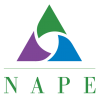Review the Theory and Evidence.
Recommendations and Strategies*
- Provide comprehensive professional development: Teachers who receive rich and sustained professional development, and professional development that is geared toward higher-order thinking skills and concrete activities, are more likely to engage in effective classroom practices. An application of comprehensive professional development was found in The Dallas Gender Equity Project that incorporated full-day workshops, mini-assignments, half-day follow-up workshops and resulted in dramatic increases in AP physics enrollments.
- Stress professional development self-assessment: Train teachers on how to assess integrated practice.
- Utilize intervention programs for IT in formal education: A study by The Ohio State University found that school experiences, such as taking computer courses, and encouraging teachers impacted successful women in IT and indicated that formal schooling is a good place for intervention.
- Foster interest, as well as skill, in math and science: The National Center for Educational Research recommends a classroom environment that encourages curiosity and embeds efforts to sustain interest and relevance in math and science. One technique for nurturing science interest and identity is to create “hybrid” space in the science classroom. A hybrid space is one that incorporates the experience of the student so that the science classroom is no longer “another world.” Not only does this increase female students’ interest in science, but it also impacts the way teachers then teach other students.
[pullquote align=”right”]Females prefer learning experiences that they help design, that are learner centered, and that involve them in a community.[/pullquote]
Effective Practices and Resources
- Career Technical Education Equity Council (CTEEC) holds an annual conference devoted to promoting equity in career and technical education.
- Gender Bias in the Classroom One preservice teacher at Florida State University, Brittany Anderson, is doing an action research project in which she analyzes her own gender bias. Anderson videotaped herself to determine whether she demonstrated any bias toward girls or boys, and if so, when and why. Watch the Video
- The Intergenerational Mentoring for Science Faculty Project consisted of a course, a faculty institute, a freshman seminar, scholarship, and intergenerational mentoring as well as small grants for faculty or secondary teachers for course and project development. A higher retention rate for females resulted.
- The Generating Expectations for Student Achievement model (GESA, Graymill) incorporates data-based classroom observation and administrative involvement to achieve whole-school equity.
- The National Alliance for Partnerships in Equity Professional Development Institute (Spring, annual, Washington, DC) combines networking, equity resources, expert speakers, and advocacy training to create a uniquely effective and powerful conference.
- The STEM Equity Pipeline Project provides resources for professional development, including online links to equity resources on the web, the 5-Step Process, state-level Train-the-Trainer, and monthly webinars on equity topics.
- The Effects of Gender Grouping and Learning Style on Student Curiosity in Modular Technology Education Laboratories by Sonya R. Porter Draper is a study that investigated whether in a modular technology education (MTE) classroom, gender groupings and learning styles predicted degree of curiosity.
